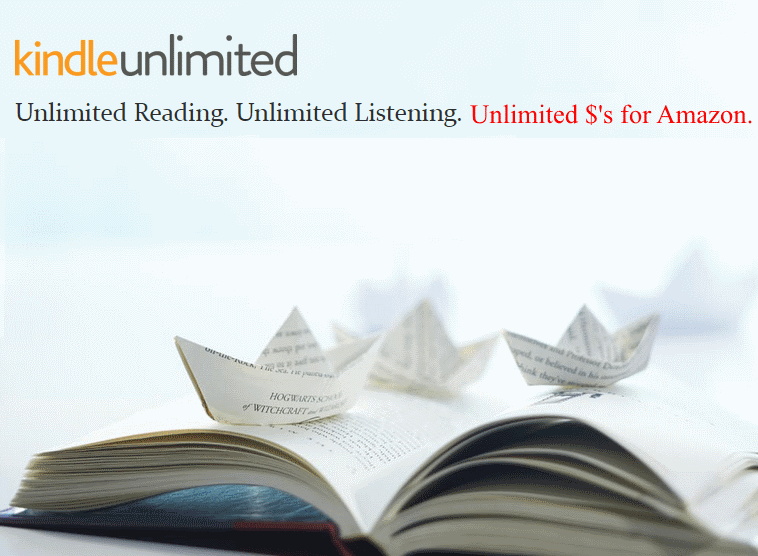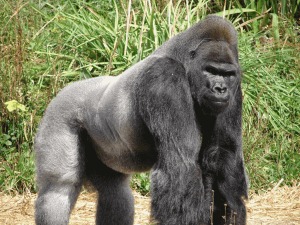 I’ve been reading various posts and commentary on Amazon’s pricing change for Kindle Unlimited. Not having any skin in the game, yet, I’ve just been trying to keep up on the news and read and share various takes on it.
I’ve been reading various posts and commentary on Amazon’s pricing change for Kindle Unlimited. Not having any skin in the game, yet, I’ve just been trying to keep up on the news and read and share various takes on it.
Someone on Twitter didn’t like it when I shared Hugh Howey’s take, which started me thinking. I hadn’t really seen a lot of posts or articles asking the key questions in my mind: why did Amazon make this shift and what will they do next?
Some authors seem to think the big-A made the pricing shift for the good of authors. Amazon says they made the change in response to feedback from authors asking to “better align payout with the length of books and how much customers read.”
Yeah, right. Amazon does what’s best for Amazon, like any company.
Whatever the impact on indie authors (and it’s pretty unpleasant for many), I expect this will not be the last change Amazon makes. Anybody who has watched what Facebook has done to marketers or what Twitter has done to its app developers knows that when you are playing or selling in somebody else’s sandbox, you’re going to continually get sand thrown in your face.
Amazon wants to dominate or eliminate the other subscription services
Of course it does. Amazon’s leadership certainly isn’t sitting in meetings saying, “We’re happy being second or third in the book subscription market.”
As a new entry into the market, Amazon has to have reasonable parity on features with the existing services and they need to have the same approximate price. That’s just the cost of being a late entrant.
 To beat the other services, they could come up with something really innovative that differentiates them, or, because they’re Amazon, they could just use their size to win on superior selection and quality.
To beat the other services, they could come up with something really innovative that differentiates them, or, because they’re Amazon, they could just use their size to win on superior selection and quality.
Superior selection means they need to have plenty of bigger name books from traditional publishers—hence their willingness to give those publishers different and better deals than small indie authors. And they need plenty of independent authors and small publishers. Overall, indie authors are naturally more inclined to Amazon with its greater market share and visibility. So the company is going in with an advantage there.
But they also need quality. And this is why I think Amazon changed its pricing model.
Amazon’s business model wrought lower quality
KU started by paying authors a share based on each download. As many have noted, a lot of authors responded by putting out more short books or novellas, in order to get more downloads. Since Amazon paid once the reader got to 10% in the book, some authors may have also given short shrift to later portions of their books.
Some bloggers and industry folks complain these authors were gaming the system. Maybe. Or maybe they were just adapting to the market. Whenever a company creates a business model, the consumers, suppliers, partners and others in the ecosystem respond and adapt to that model. Our entire country was changed by Walmart’s business model. It’s no surprise that authors changed their writing approach to adapt to the business model of the biggest book seller in the world.
I didn’t look at the quality of books in KU, so I can’t speak to that personally. But, I’m quite confident that Amazon changed their pricing because they thought it would help them against their competition. They think this change will get them either more books, better quality books, or both.
Scribd’s action to purge from its lists the higher-priced romance books with lower word counts might also be a sign. Scribd has other issues forcing this change (funding pressures, the low return on its large base of romance subscribers). But is it really a coincidence that they made the change alongside Amazon’s?
More likely, they realized that Amazon is going to be gaining more long-fiction. Neither Scribd nor Amazon wants to be known as the subscription service primarily for short-fiction. I’m not saying there is anything wrong with short fiction. But a service needs to have both and not get the reputation of only short fiction (or only romance, only thrillers, etc.) They both want to be known for providing a variety of high-quality content, both short and long.
KU’s exclusivity might be better for authors than the alternative
Some have commented that Amazon’s deal would be better if KU didn’t require exclusivity. I’m not so sure. You know what happens when several products offer the same set of features and the same basic level of quality? It becomes a race to the bottom on pricing. If selection and quality are the same, whoever is cheaper wins. Consumers pick based on price.
That means subscription service pricing, as a whole, goes down. And the more books there are, the more thinly the limited funds get spread. Authors get paid less. Just like musicians are seeing in music subscription services.
So, maybe indie’s should be thankful that KU is exclusive and that Amazon is fighting for dominance. But the future still doesn’t look good from what I can see.
Amazon’s review system changes may be related to the KU pricing change
Did you notice that Amazon changed its review system around the same time as the KU pricing change? There were plenty of good reasons to change its system, even just from the company’s perspective. And, knowing how large companies work, the folks handling the review system are surely in an entirely different group than those running KU or the book side. But, I wouldn’t be surprised if at a strategic level, the C-suite considered improving the accuracy of reviews part of the KU strategy.
![]() Of course, books which have better reviews under the new system will get more prominence in KU. But—are you ready for it—I wouldn’t be surprised if Amazon later ties author payments to reviews, in addition to number of pages read.
Of course, books which have better reviews under the new system will get more prominence in KU. But—are you ready for it—I wouldn’t be surprised if Amazon later ties author payments to reviews, in addition to number of pages read.
If your goal is to improve the quality of the content in your book subscription service, it makes sense to offer a bigger payout for those books that readers rate higher? It’s like your yearly review at work—the better the review, the bigger the raise. You still get paid by the hour, but now you get paid more per hour.
Amazon introduced something else in the last couple of weeks: it updated its sharing features for Kindle books. It made it easier for readers to share quotes and recommendations from within books, and have conversations about the books with friends/family. That has plenty of implication and benefits for authors which I’ll cover in a later post.
But it does something else for Amazon. It’s another way to see what readers like: another data point along with reviews. And it even provides that data with a demographic element: 14-18 year olds like book x, 18-25 year olds like book y, upper-middle class female twenty-somethings like book z.
A three-tiered or even multi-tiered payment model
Right now, Amazon has a two-tiered payment model for authors in KU. Traditionally published authors get paid one way (more) and indies another (less).
With review data, Amazon could move to a three-tiered model. Traditional authors get paid the most (because Amazon has to negotiate with the publishing companies, not the authors). Indie authors of a certain caliber—as indicated by some complicated algorithm involving sales, pages read, and reviews—get paid somewhat less. And the bottom tier gets paid the least.
But with demographic data, Amazon could create an even more complex payment system. It could factor in demographics and demand within those demographics and it could base the payments on rankings within those demographics. It could fund higher payments by introducing tiered subscription plans—which it can easily do once it’s the dominant books subscription service. Who knows where it will end. But probably not anyplace good for the majority of indie authors.
The end game
The end game for Amazon, besides being the dominant or only viable subscription service, is changing the market in such a way that consumers are no longer willing to pay the prices demanded by traditional publishers. When readers can get many or most great books for only $10 a month, who’s going to pay $10 a book?
So, once Amazon has dominance, wouldn’t the next logical step be to force all indie authors into KU? I.e., Amazon declares that only publishers can sell their books on Amazon. Indies must use the subscription service.
That may seem crazy to you now, but I cite again Facebook, Twitter, etc. It’s Amazon’s sandbox. They make the rules and can change them at any time.
 Unfortunately, at that point, indie authors would have no other viable way to sell any reasonable volume of books. And, it then becomes pretty tough for publishers to sell their books. They’ll be forced to enter into some other agreement with Amazon, most likely involving being in KU and taking a big pay cut. Or becoming a completely different kind of business than they are now.
Unfortunately, at that point, indie authors would have no other viable way to sell any reasonable volume of books. And, it then becomes pretty tough for publishers to sell their books. They’ll be forced to enter into some other agreement with Amazon, most likely involving being in KU and taking a big pay cut. Or becoming a completely different kind of business than they are now.
Of course, this is all speculation. Others may have even better insights into the market or Amazon’s goals. (I’m interested in hearing them in the comments!) The key is to ask: what are Amazon’s goals and what are they likely to do to achieve them—knowing that Amazon only really cares about growing its business.
What do you think?
* Jock the Gorilla image By Antony from Gloucester, UK (Jock, the Gorilla (2)) [CC BY-SA 2.0 (http://creativecommons.org/licenses/by-sa/2.0)], via Wikimedia Commons
Sandbox image by me (my own hard work) [GFDL (http://www.gnu.org/copyleft/fdl.html) or CC 3.0 (http://creativecommons.org/licenses/by/3.0)], via Wikimedia Commons